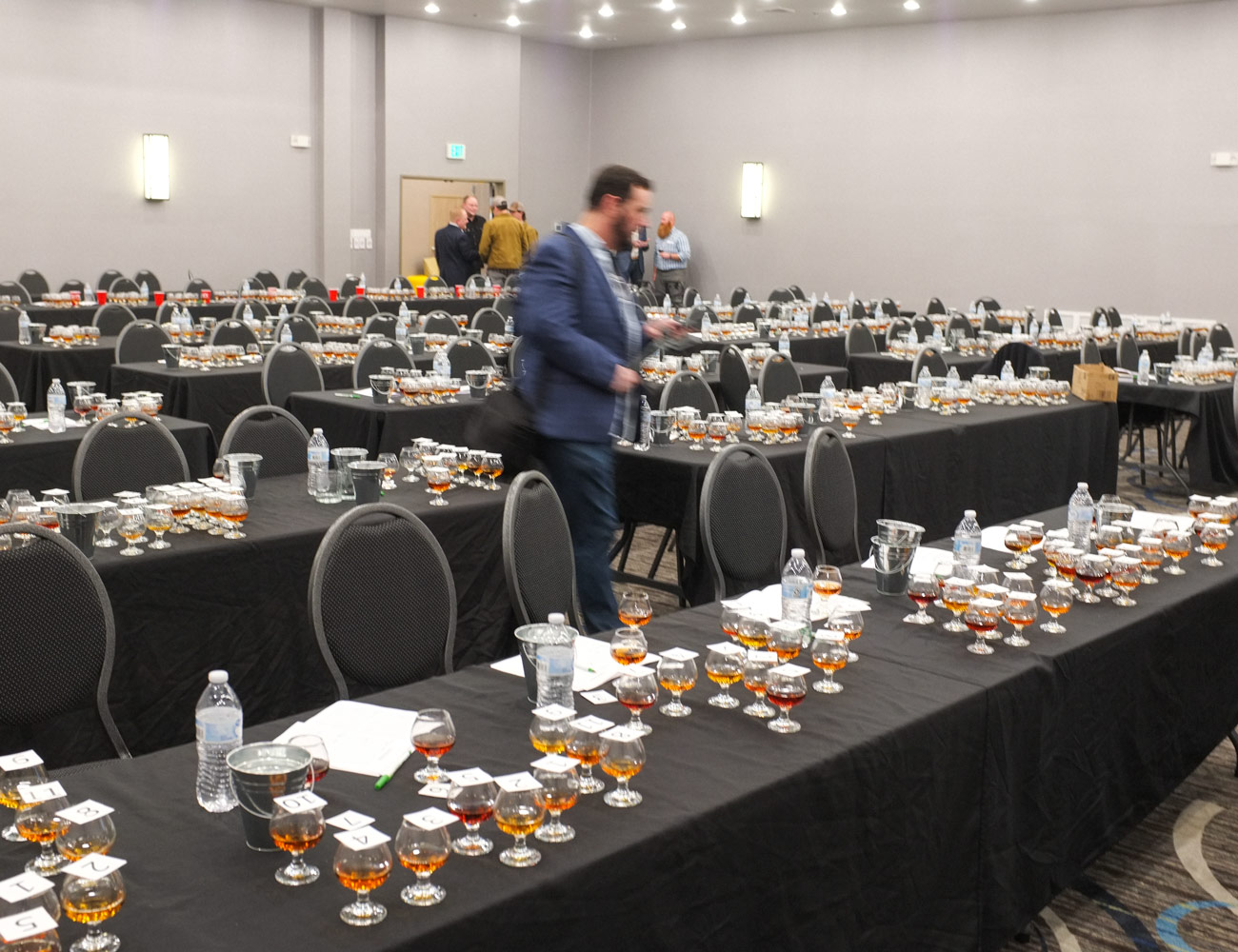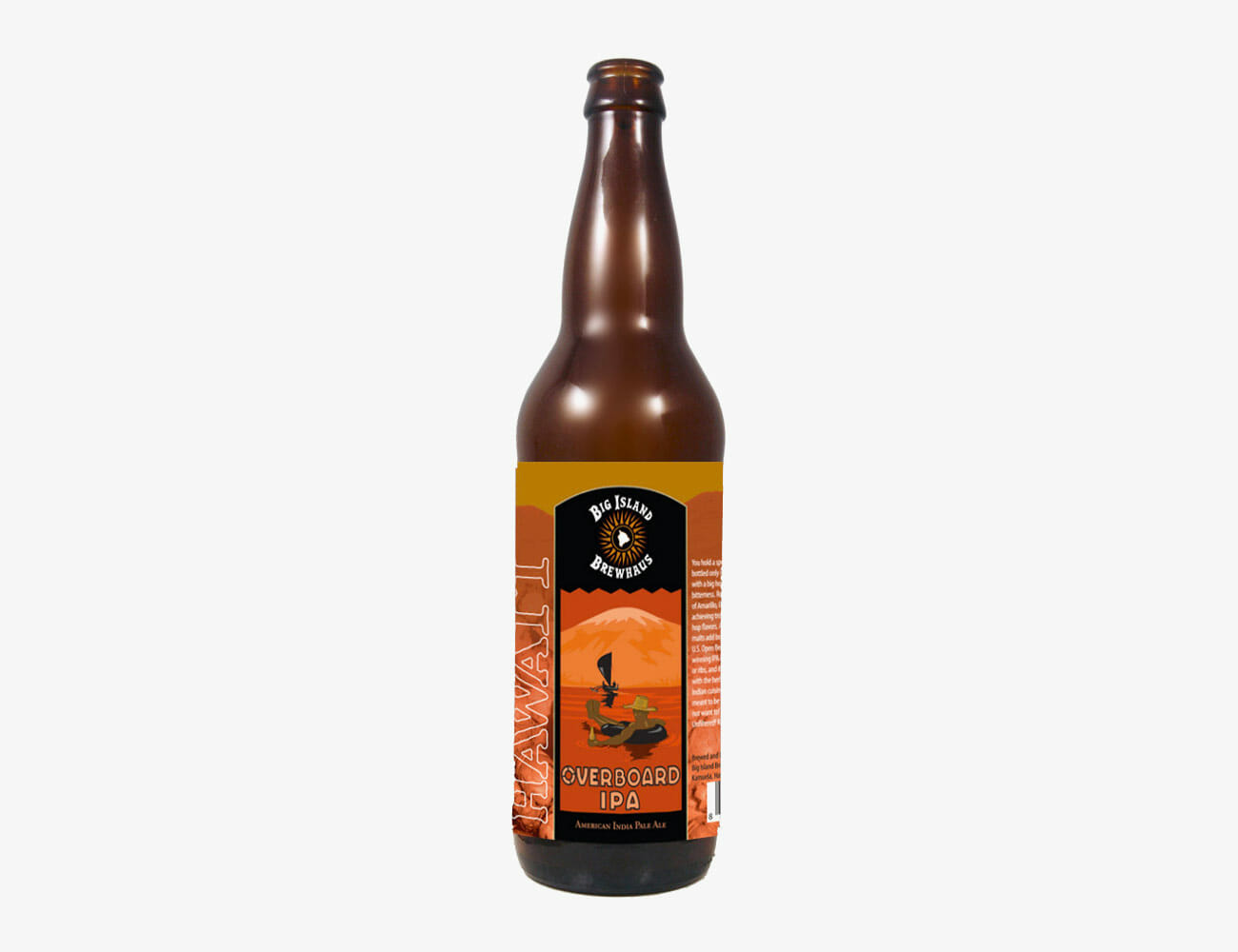On a warm winter day last month in Longview, Texas, a handful of Texan distillers lounged in a Holiday Inn Express hospitality suite, sipping high-proof bourbon and awaiting judgment from a hirsute Englishman named Jim Murray. “I saw him getting off the elevator,” said one. “I was too intimidated to ask him any questions.”
Eleven distilleries were competing for the title of the Best Bourbon in Texas at the first-ever Texas Bourbon Shootout, hosted by the East Texas Bourbon Society, a local group of bourbon sippers. Proceeds for the event were going to charity. But the stakes were high for the distillers.
Murray, the author of Jim Murray’s Whiskey Bible and one of the premier whiskey reviewers in the world, had announced that he would allow the crowd to vote for its favorites in a round of blind head-to-head tastings between the 11 whiskeys. Texas democracy would name a winner. But catching the Englishman’s eye, in particular, could land them a favorable review in the Whiskey Bible — and help put Texas bourbon on the map.

Though they’ve been distilling whiskey for less than ten years, a growing crop of Texas distilleries have become standouts in American spirits making. They’ve benefitted from knowledge imported several states from the north, like Kentucky, where bourbon making is hundreds of years old. Uniquely, they’ve taken up the practice of using pot stills, rather than standard continuous ones. Then there’s the matter of maturation.
Bourbon gains its classic flavors from aging in charred, new American oak barrels in a rickhouse; temperature and humidity changes force the liquid into, and then back out of, the wood, imparting flavor. A February day in Kentucky might fluctuate from 35 to 45 degrees. In Texas, it’s 35 at night and 75 during the day. That means the flavors, like everything in Texas, are bigger.
The best Kentucky bourbon has notes of butter and cornbread; Texas whiskey is fiery with enough explosive power on the palate to garner national attention. So far, the state’s single malts have attracted the most spotlight. They’ve won awards at competitions like Whiskies of the World, International Wine & Spirits Competition and the American Craft Spirits Awards. Their price point, around $70, competes with other Scotch and Japanese single malts. Meanwhile, Texan bourbons have lagged behind, in part because they cost $60 to $70 — more than their better-established Kentucky cousins. Bourbon needs sweetness and nuance, two things the young Texas distillers are still honing.

Whiskey making is not a pure science, the Texan distillers in the hospitality suite reminded, no matter how many high-tech molecular machines are employed. Tinkering flavors takes time. “So often, we’re working backwards, from something tasting good and trying to figure out why that is, rather than the other way around,” said Rob Arnold, head distiller of Firestone & Robertson distilling company.
“Sometimes the worst thing is a unicorn batch,” said Dan Garrison, cofounder of Garrison Brothers. “It works so well the first time, but then it doesn’t work again, and you can’t figure out why.”
Murray, for his part, listed a Balcones single malt and a Garrison Brothers bourbon as the best U.S. microbrands of 2019. “I was totally blindsided by the flavors,” he said. Among those flavors: French toast, and Manuka honey smeared on overcooked fruitcake. How they’d done it, he wasn’t sure. “That’s why I wanted to do this tasting, actually,” he said.
Ahead of the tasting, the competing distillers filed in just as Murray took a small stage in a ballroom filled with rows of tables and more than a thousand tasting glasses. He then led the audience of 100 or so in the strict tenets of what he calls “The Murray Method” of tasting. It has eighteen listed rules, including no talking (listen to the whiskeys, not each other); assessing the nose, mouthfeel, balance, and taste of each whiskey; and to never, ever, under any circumstances, add any water or ice to the whiskey.
The Texans, told to hold their drams against their bodies for minutes on end to warm them—and then to spit, not swallow, seemed on the verge of secession.
“Bourbon,” Murray pronounced, “is the most honest of—”
A Texan raised a bourbon to his lips. “No no no!” Murray shouted. “No tasting yet! Thank you.”
“The most honest of whiskeys…”
Murray asked the Texans to wiff their whiskey three times, then take a sip, then spit it out, to cleanse their palates, then nose three more times — don’t stick your noses in it, remember — and then take a sip, chew with open mouth, like a halibut taking water into its gills, to aerate; then, spit the bourbon.
“Listen to that whiskey,” Murray commanded.
The Texans listened.
Was the whiskey sweet or dry?
“Drah,” a man yelled.
Oily?
“A little bit.”
What are we tasting?
“Orange peel.”
“Chocolate.”
Very good. Were we still tasting the whiskey moments later? Yes? That means a long finish.
Two whiskeys were tasted head to head, a hand vote was taken, and one was voted out. Murray announced the name of the loser and moved onto the next pair.
Seven whiskies later, Murray announced that he still had not found two that were even close to each other in identity. Some were nutty and buttery; some were spicy and enormous on the tongue; only a few, with cuts too wide or unbalanced between spices and sweetness, were dropped from competition without a full count of hands.
Murray praised several defeated whiskeys: one, in particular, would do well in The Whiskey Bible, he noted, and he couldn’t wait to review it there. Four bourbons remained, all of them stellar. “This has big tannins, big sugars,” Murray said, face aglow. “This could be mistaken for a Kentucky whiskey.”

The winners, Garrison Brothers, the oldest Texas distillery, hailing from Hye, Texas.
The final head to head came several hours in. The crowd moved at the tempo of Murray’s rules, nosing and sipping, and was finally allowed to swallow: the rapturous burning of the stomach lining spread throughout the room. Murray held both bourbons aloft and moved to pick one. “Which one is sexier on the nose?”
“Hold on,” someone yelled from the crowd. “Don’t be rushin’.”
“It’s time to choose the best bourbon in Texas!” Murray declared.
“It’s a tah!” someone yelled.
It was not. The winner was Balmorhea, a 115-proof bourbon made by Garrison Brothers, the oldest Texas distillery, hailing from Hye, Texas. The runner up was the Blue Corn Bourbon from Balcones, the second-oldest distillery in Texas. What had made them the best of the best? Both had massive amounts of both spice and sugars, yet remained balanced; both had the traditional flavors sought in a bourbon, like vanilla, oak, and caramel, but added flavors like red-hots, cherry and espresso. Both whiskeys, Murray noted, came from Texas distilleries who’d been at it long enough to experiment and perfect their distillates.
The crowd filed out for barbeque, live music and more drams of the winners. “These are among the best whiskeys, not just in Texas,” Murray said as he stepped down from his stage, “but among the world.”




